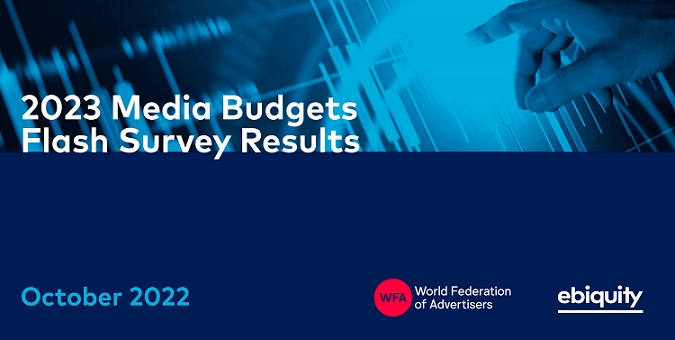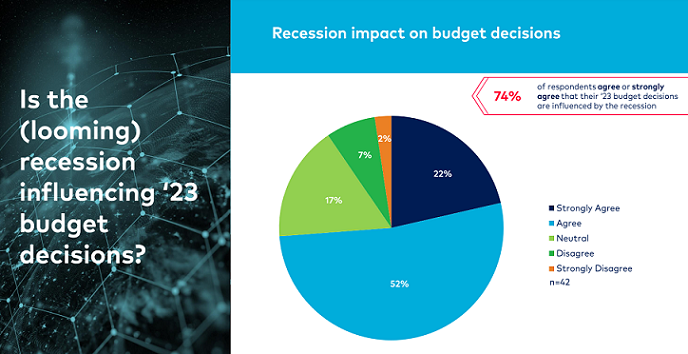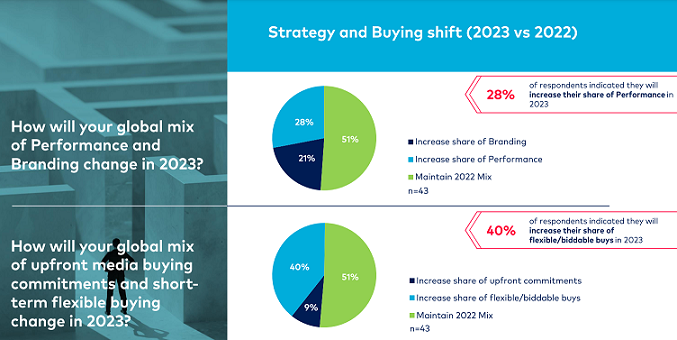
 More performance spend and greater emphasis on flexible budgeting likely in 2023
More performance spend and greater emphasis on flexible budgeting likely in 2023
Marketing and advertising budgets are coming under increasing pressure and heavy scrutiny from finance directors in the volatile and unpredictable 2022 marketplace, according to new research. Nevertheless, some of the world’s biggest brands remain committed to maintaining planned investment despite the threat of recession in many markets.
A new study from the World Federation of Advertisers (WFA) and Ebiquity assessed the intentions of 43 multinational companies. The sample included five of the world’s top 10 advertisers by spend, which collectively invest more than $44bn in advertising. Just under a third (29%) of those surveyed plan to decrease spend in 2023, with the same proportion claiming they will invest more next year. Four in 10 say they will maintain their budgets at 2022 levels. Three quarters of the sample “agree strongly” or “agree” that 2023 budgets are under heavy scrutiny, with marketers required to justify investment.
Regional differences
There is more evidence of a potential cut in spend in EMEA compared with APAC. In EMEA, for example, a third of respondents agree there could be a significant (more than 10%) or slight decrease (0-10%) next year, compared to 30% who are planning a slight increase in spend. By contrast, in Asia Pacific just 15% envisage a slight decrease while 35% plan a slight increase.
Shift to short-termism
The big change in behaviour seen in the research is a different emphasis in the way that money will be allocated next year, with greater emphasis on short-term, performance marketing. Twenty-eight per cent of respondents say they will seek to boost performance, compared to 21% who are focused on increased brand spend in 2023.
The big winner will be digital, with 42% saying they will increase spend either slightly or significantly, with offline media such as TV, radio, print, and outdoor likely to suffer. Nearly half of respondents are planning to cut offline investment and a quarter are looking to make a significant cut (of more than 10%) in print spend.
Increasing flexibility
The other major change is the move towards more flexibility in investment. This means greater use of biddable/auction-based platforms, a long-term change in the way media is bought particularly on digital channels. This approach also allows brands to hold back funds, should the economic conditions dictate. Fewer than one in 10 respondents (9%) are planning to increase the proportion of budget allocated to upfront commitments.
“It is encouraging to see that a number of clients are planning on standing firm and taking heed of the well-taught lessons of previous recessions, which show time and again that those who continue to invest or increase their ad spend emerge stronger from periods of economic uncertainty,” said Stephan Loerke, WFA CEO.
“As brands are required to achieve more with less in 2023 to optimise the value of their investments, it makes sense to review expenditure and cut ineffective and wasteful spend first,” added Nick Waters, Ebiquity’s Group CEO. “Sustaining investment is one thing, but there is a risk to long-term brand health by over-investing at the bottom of the purchase funnel. It is a natural instinct to want to see immediate results from media investment but the longer-term trade off needs to be weighed carefully. It becomes more expensive to re-build brand credentials once they have slipped.”
